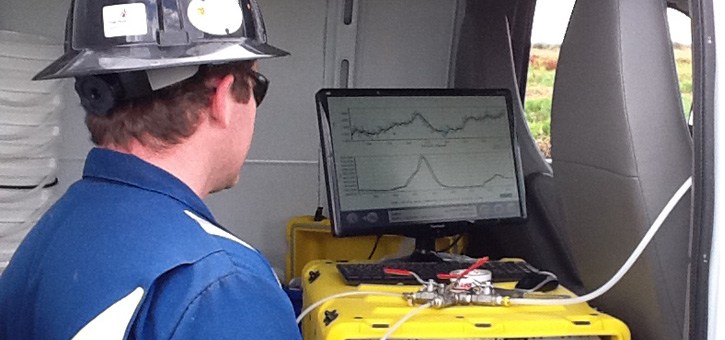Inconclusive gas migration tests are both costly and frustrating. Many times, completed tests still provide no real answer. Exposing the wellhead remains your only option to identify and fix otherwise unsuspected gas migration (GM). Wouldn’t it be great to get it right the first time?
Inconclusive tests on an abandoned well that’s convulsing gas should never happen. Not only does it present a huge problem for the environment, but it’s also bad for business.
There are reasons why inconclusive results happen, but there are also precautions to take to ensure you receive a correct reading. Inconclusive results can occur due to poor sampling, poor field measurements, or both. For the well featured in the video, we took surface readings 1m, 2m, and more, away from the well centre in all directions, ensuring we had a wide breadth of sampling. All but one result was above 250 ppm methane, but some of the readings showed “non-detect!” The background sample locations at the site also showed trace methane readings, therefore, nothing conclusive could have been determined from surface measurements alone. And this from a well that is hemorrhaging gas. So what does this mean for wells with only small leaks?
Surface readings do have a place in verifying if a well is leaking; however, just because your surface readings are good, doesn’t guarantee there isn’t a potential problem (now or in the future) and may give you a false sense of security. For wells in contentious areas, wells in known-problem areas, or vintages of wells with a history of issues, the best long-term strategy is to include the use of gas probes at a minimum of 50 cm depth to ensure good soil gas samples are collected. Probe samples tell a very different story. Using the same samples discussed above, readings from sub-surface probes in the same locations were 50,000 to 200,000 ppm methane in ALL samples, providing the definitive identification of gas migration.
Taking the extra precaution by using probes provides a key ingredient to a successful investigation. The higher concentration gas samples provide for better isotopic analysis, which will produce the molecular signature (fingerprint) of the source zone.
An investigation designed using these best practices will achieve the ultimate goal – reaching a solid answer the first time, without revisiting the site over and over again.
Before you head out on your next GM investigation, consider how much time, money, and resources you’ll save by getting it right the first time. Investing a little more in your tools now will ensure you save money – for you and your client – in the future.


-1.png?width=859&name=Sample%20%231%20(2)-1.png)
.jpg?width=859&name=Archery%20photo%20(3).jpg)